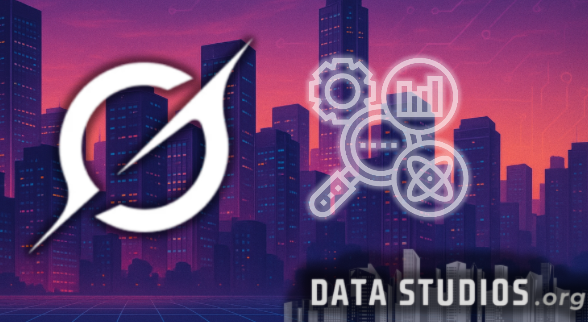Grok: Automating research workflows with advanced APIs and structured pipelines
- Graziano Stefanelli
- Aug 20
- 3 min read

Large-scale research tasks require a structured method to transform massive amounts of data into accurate, usable knowledge. Grok has emerged as a practical system for automating workflows that once required hundreds of manual hours. Its combination of extended context windows, structured tool-calling, hierarchical summarisation, and governance controls allows organisations to run end-to-end research pipelines with both speed and accuracy.
Model options balance speed, cost, and depth.
Grok provides different model tiers, each tuned for a specific balance of latency, throughput, and reasoning accuracy.
Model | Context window | Latency (first token) | Throughput (tokens/sec) | Best use |
Grok-4 Lite | 128 000 | ~0.9 s | ~110 | High-volume document chunking |
Grok-4 | 256 000 | ~1.8 s | ~75 | Multi-step summarisation and synthesis |
Grok-4 Heavy | 256 000 | ~2.9 s | ~55 | Accuracy-focused fact validation and compliance |
Selecting the right model tier is critical. Lite accelerates first-pass summarisation, while Heavy ensures that the final synthesis stands up to legal, medical, or financial scrutiny.
Function calling transforms Grok into a structured agent.
The Messages API supports function calling through JSON schemas. This enables Grok to request an external function call—such as a database query, literature search, or code execution—then resume its reasoning based on the returned results.
Constraint | Recommended limit | Reason |
Nesting depth | ≤ 3 levels | Avoids schema stalls |
Enum field length | ≤ 256 characters | Prevents validation errors |
Functions per call | ≤ 128 | Keeps processing reliable |
Calls per minute (Heavy) | 20 | Within rate limits |
This approach allows Grok to orchestrate a research pipeline where information retrieval, extraction, and interpretation are handled in a loop of structured steps.
Hierarchical summarisation processes massive corpora.
Processing hundreds of thousands of tokens at once is inefficient. Grok’s most effective strategy is hierarchical chunking, where documents are split, summarised, and then re-summarised at higher levels of abstraction.
Step | Action | Token budget | Output |
1 | Split source into 1 000–2 000 token chunks | -- | Clean input chunks |
2 | Summarise each chunk with Grok-4 Lite | ≤ 500 | First-level abstracts |
3 | Merge abstracts and run Grok-4 | ≤ 2 000 | Mid-level synthesis |
4 | Validate with Grok-4 Heavy | ≤ 2 000 | Fact-checked master report |
Benchmarks show that this reduces analyst review time by over 70 percent, while maintaining accuracy across chains of 30 or more documents.
Scratch-pad memory sustains reasoning across tasks.
One limitation in long research chains is losing continuity. To prevent this, a scratch-pad entry can be maintained. This is a running log of key facts, citations, and unanswered questions carried forward across prompts.
Scratch-pad element | Purpose |
Facts list | Tracks verified data points |
Citations | Ensures reference traceability |
Open questions | Flags gaps for future passes |
Compressing the scratch-pad periodically to about 500 tokens conserves context while preserving reasoning integrity.
Streaming and continuation prevent truncation.
Long answers often exceed Grok’s per-response limits. By enabling streaming, partial outputs are delivered in real time. If cut off mid-sentence, a continuation request resumes exactly where the stream ended. This avoids duplication, reduces cost, and ensures seamless narrative flow in extended reports.
Batch strategies accelerate throughput.
High-volume research workloads are optimised with parallel batching.
Model | Requests/minute | Recommended batch size |
Grok-4 Lite | 90 | 15–20 |
Grok-4 | 60 | 8–10 |
Grok-4 Heavy | 20 (tools) | 4–5 |
Combining batching with hierarchical summarisation reduces processing time for a 50 000-token corpus from around 22 minutes to under 10 minutes.
Governance features enforce security and compliance.
Research often involves sensitive information. Grok provides enterprise-grade governance controls:
Feature | Description |
No-train flag | Excludes tenant prompts from model training |
Region lock | Restricts processing to EU, US, or APAC data zones |
Audit queue | Records timestamp, connector ID, and prompt hash |
Spend caps | Alerts or halts when token budgets reach thresholds |
These controls ensure workflows remain compliant with internal policy and external regulation.
Prompt template for automated literature review.
System: You are a senior research analyst. Keep a summary under 300 words in ## Notes:.
Role: Summarise each chunk, list three findings, and cite source IDs.
Query: {{chunk_text}}
After completion:
User: NEXT_STEP
triggers Grok to propose the next chain in the research loop.
New capabilities expand automation.
Several upcoming features extend Grok’s role in research automation:
Studio IDE integration with cloud storage for direct file ingestion.
Auto-chunk detection API to identify optimal break points in long documents.
Lightweight tuning adapters that let enterprises adjust Grok-4 Lite to specialised vocabularies with as little as 5 million training tokens.
With these updates, Grok is positioned as a central component of fully automated, large-scale research workflows, making knowledge synthesis faster, safer, and more reliable.
____________
FOLLOW US FOR MORE.
DATA STUDIOS




